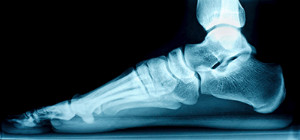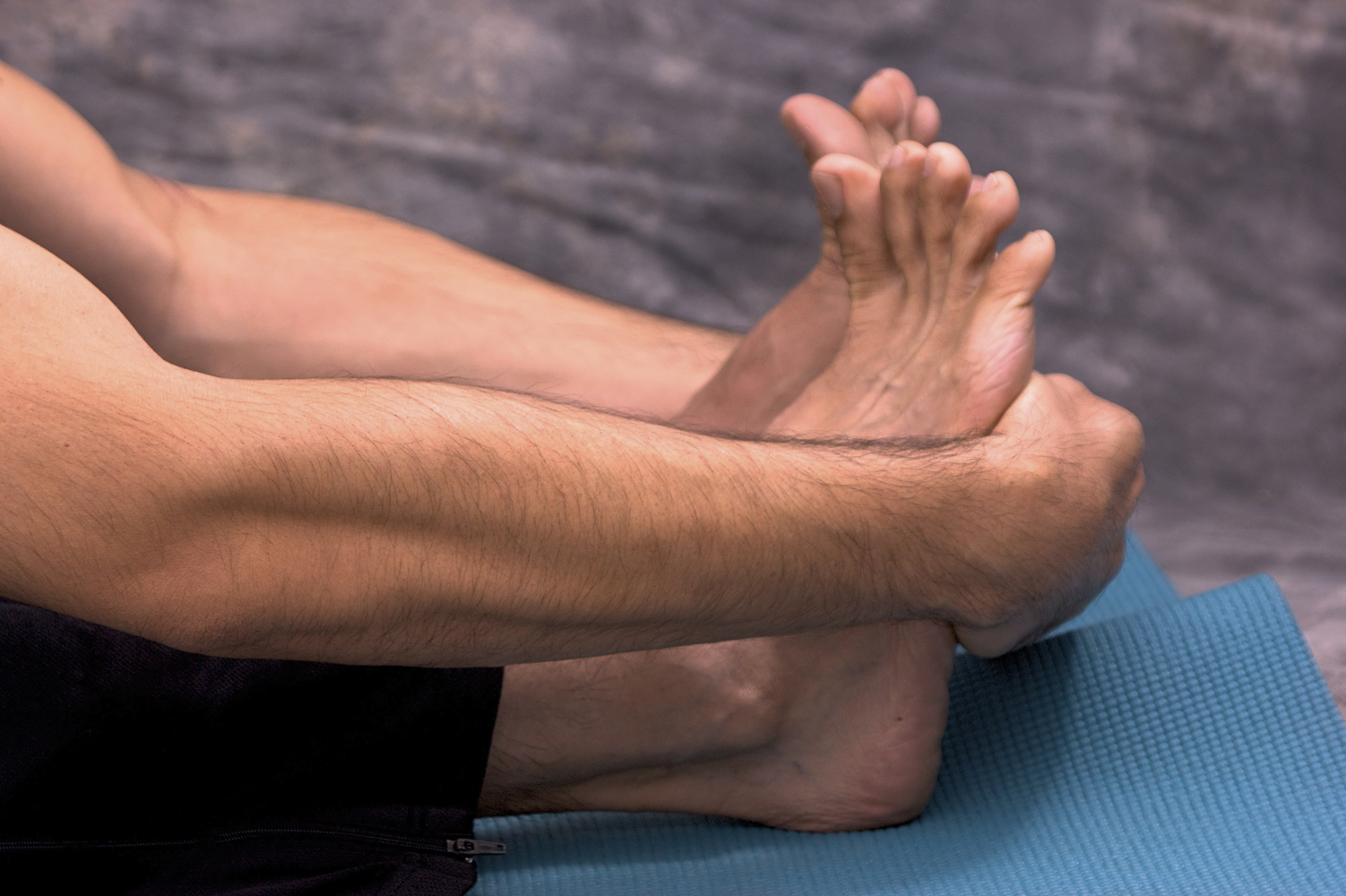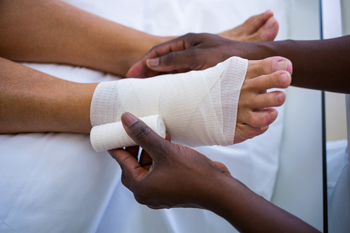Items filtered by date: January 2021
Fallen Arches and How They Affect the Feet
 Many people have flat feet from birth, however, flat feet can also be acquired later in life. Years of wear and tear on the feet can lead to a weakening of the tendon that runs along the inside of the ankle and creates the arch in your foot. This is known as having fallen arches. Unlike congenital flat feet, which typically cause no symptoms, flat feet due to fallen arches can be painful. If you have fallen arches, you may feel pain in your heel or arch areas and see swelling along the inside of the ankle. Wearing supportive shoes and custom orthotics, as well as stretching the feet can help you manage fallen arch pain. If you have painful fallen arches, it is suggested that you see a podiatrist for treatment.
Many people have flat feet from birth, however, flat feet can also be acquired later in life. Years of wear and tear on the feet can lead to a weakening of the tendon that runs along the inside of the ankle and creates the arch in your foot. This is known as having fallen arches. Unlike congenital flat feet, which typically cause no symptoms, flat feet due to fallen arches can be painful. If you have fallen arches, you may feel pain in your heel or arch areas and see swelling along the inside of the ankle. Wearing supportive shoes and custom orthotics, as well as stretching the feet can help you manage fallen arch pain. If you have painful fallen arches, it is suggested that you see a podiatrist for treatment.
Flatfoot is a condition many people suffer from. If you have flat feet, contact Dr. Mark Gagnon from Advanced Podiatry. Our doctor will treat your foot and ankle needs.
What Are Flat Feet?
Flatfoot is a condition in which the arch of the foot is depressed and the sole of the foot is almost completely in contact with the ground. About 20-30% of the population generally has flat feet because their arches never formed during growth.
Conditions & Problems:
Having flat feet makes it difficult to run or walk because of the stress placed on the ankles.
Alignment – The general alignment of your legs can be disrupted, because the ankles move inward which can cause major discomfort.
Knees – If you have complications with your knees, flat feet can be a contributor to arthritis in that area.
Symptoms
- Pain around the heel or arch area
- Trouble standing on the tip toe
- Swelling around the inside of the ankle
- Flat look to one or both feet
- Having your shoes feel uneven when worn
Treatment
If you are experiencing pain and stress on the foot you may weaken the posterior tibial tendon, which runs around the inside of the ankle.
If you have any questions please feel free to contact one of our offices located in Crestwood, Orland Park, and Summit, IL . We offer the newest diagnostic and treatment technologies for all your foot and ankle needs.
What Is a Peroneal Tendon Injury?
 The peroneal tendons are bands of tissue that run behind the outer ankle bone. These tendons stabilize the foot and ankle and protect them from sprains. People who participate in sports, especially those involving repetitive ankle motion, and people with high arches are at an increased risk of experiencing a peroneal tendon injury. This type of injury can be caused by inflammation, tearing, degeneration or dislocation of one or both peroneal tendons. Injury to the tendons can cause symptoms such as pain, swelling, warmth, weakness, or instability in the affected foot and ankle. If you are experiencing foot or ankle pain, it is suggested that you consult with a podiatrist.
The peroneal tendons are bands of tissue that run behind the outer ankle bone. These tendons stabilize the foot and ankle and protect them from sprains. People who participate in sports, especially those involving repetitive ankle motion, and people with high arches are at an increased risk of experiencing a peroneal tendon injury. This type of injury can be caused by inflammation, tearing, degeneration or dislocation of one or both peroneal tendons. Injury to the tendons can cause symptoms such as pain, swelling, warmth, weakness, or instability in the affected foot and ankle. If you are experiencing foot or ankle pain, it is suggested that you consult with a podiatrist.
Foot and ankle trauma is common among athletes and the elderly. If you have concerns that you may have experienced trauma to the foot and ankle, consult with Dr. Mark Gagnon from Advanced Podiatry. Our doctor will assess your condition and provide you with quality foot and ankle treatment.
Foot and ankle trauma cover a range of injuries all over the foot; common injuries include:
- Broken bones
- Muscle strains
- Injuries to the tendons and ligaments
- Stress fractures
Symptoms
Symptoms of foot and ankle injuries vary depending on the injury, but more common ones include:
- Bruising
- Inflammation/ Swelling
- Pain
Diagnosis
To properly diagnose the exact type of injury, podiatrists will conduct a number of different tests. Some of these include sensation and visual tests, X-rays, and MRIs. Medical and family histories will also be taken into account.
Treatment
Once the injury has been diagnosed, the podiatrist can than offer the best treatment options for you. In less severe cases, rest and keeping pressure off the foot may be all that’s necessary. Orthotics, such as a specially made shoes, or immobilization devices, like splints or casts, may be deemed necessary. Finally, if the injury is severe enough, surgery may be necessary.
If you have any questions, please feel free to contact one of our offices located in Crestwood, Orland Park, and Summit, IL . We offer the newest diagnostic and treatment technologies for all your foot care needs.
Stretching the Feet After a Run
 Following a run, your feet may feel sore and achy. Fortunately, performing certain foot stretches can help you find relief. After a run, stretch your feet by kneeling on a mat or carpet. Tuck your toes towards your knees and slowly lower your body so that your pelvis sits on top of your heels. Stay in this position for approximately 30 seconds. You should feel a stretch in the bottoms of your feet. Next, slowly raise your pelvis off of your heels, point your toes away from your knees, and sit back down on your heels. You should feel a stretch in the tops of your feet. Repeat this stretch twice. For more information about stretching your feet and why it's important, please consult with a podiatrist.
Following a run, your feet may feel sore and achy. Fortunately, performing certain foot stretches can help you find relief. After a run, stretch your feet by kneeling on a mat or carpet. Tuck your toes towards your knees and slowly lower your body so that your pelvis sits on top of your heels. Stay in this position for approximately 30 seconds. You should feel a stretch in the bottoms of your feet. Next, slowly raise your pelvis off of your heels, point your toes away from your knees, and sit back down on your heels. You should feel a stretch in the tops of your feet. Repeat this stretch twice. For more information about stretching your feet and why it's important, please consult with a podiatrist.
Stretching the feet is a great way to prevent injuries. If you have any concerns with your feet consult with Dr. Mark Gagnon from Advanced Podiatry. Our doctor will assess your condition and provide you with quality foot and ankle treatment.
Stretching the Feet
Stretching the muscles in the foot is an important part in any physical activity. Feet that are tight can lead to less flexibility and make you more prone to injury. One of the most common forms of foot pain, plantar fasciitis, can be stretched out to help ease the pain. Stretching can not only ease pain from plantar fasciitis but also prevent it as well. However, it is important to see a podiatrist first if stretching is right for you. Podiatrists can also recommend other ways to stretch your feet. Once you know whether stretching is right for you, here are some excellent stretches you can do.
- Using a foam roller or any cylindrical object (a water bottle or soda can will do), roll the object under your foot back and forth. You should also exert pressure on the object. Be sure to do this to both feet for a minute. Do this exercise three times each.
- Similar to the previous one, take a ball, such as a tennis ball, and roll it under your foot while seated and exert pressure on it.
- Grab a resistance band or towel and take a seat. If you are using a towel, fold it length wise. Next put either one between the ball of your foot and heel and pull with both hands on each side towards you. Hold this for 15 seconds and then switch feet. Do this three times for each foot.
- Finally hold your big toe while crossing one leg over the other. Pull the toe towards you and hold for 15 seconds. Once again do this three times per foot.
It is best to go easy when first stretching your foot and work your way up. If your foot starts hurting, stop exercising and ice and rest the foot. It is advised to then see a podiatrist for help.
If you have any questions, please feel free to contact one of our offices located in Crestwood, Orland Park, and Summit, IL . We offer the newest diagnostic and treatment technologies for all your foot care needs.
Signs That Foot Wounds Should Be Checked
 An ulcer that develops on the foot is a wound that may not heal. This type of ailment can cause severe pain and discomfort and is common among diabetic patients. Redness on and around the affected area is often the first sign of a foot wound, and additional symptoms can include an unpleasant odor and possible drainage. There are several reasons why foot wounds may occur. These can consist of living a sedentary lifestyle, nerve damage, or circulation problems. Additionally, medical conditions such as high blood pressure and diabetes may make developing wounds on the feet more likely. If you are prone to foot wounds, it is strongly suggested that you are under the care of a podiatrist who can effectively treat this problem.
An ulcer that develops on the foot is a wound that may not heal. This type of ailment can cause severe pain and discomfort and is common among diabetic patients. Redness on and around the affected area is often the first sign of a foot wound, and additional symptoms can include an unpleasant odor and possible drainage. There are several reasons why foot wounds may occur. These can consist of living a sedentary lifestyle, nerve damage, or circulation problems. Additionally, medical conditions such as high blood pressure and diabetes may make developing wounds on the feet more likely. If you are prone to foot wounds, it is strongly suggested that you are under the care of a podiatrist who can effectively treat this problem.
Wound care is an important part in dealing with diabetes. If you have diabetes and a foot wound or would like more information about wound care for diabetics, consult with Dr. Mark Gagnon from Advanced Podiatry. Our doctor will assess your condition and provide you with quality foot and ankle treatment.
What Is Wound Care?
Wound care is the practice of taking proper care of a wound. This can range from the smallest to the largest of wounds. While everyone can benefit from proper wound care, it is much more important for diabetics. Diabetics often suffer from poor blood circulation which causes wounds to heal much slower than they would in a non-diabetic.
What Is the Importance of Wound Care?
While it may not seem apparent with small ulcers on the foot, for diabetics, any size ulcer can become infected. Diabetics often also suffer from neuropathy, or nerve loss. This means they might not even feel when they have an ulcer on their foot. If the wound becomes severely infected, amputation may be necessary. Therefore, it is of the upmost importance to properly care for any and all foot wounds.
How to Care for Wounds
The best way to care for foot wounds is to prevent them. For diabetics, this means daily inspections of the feet for any signs of abnormalities or ulcers. It is also recommended to see a podiatrist several times a year for a foot inspection. If you do have an ulcer, run the wound under water to clear dirt from the wound; then apply antibiotic ointment to the wound and cover with a bandage. Bandages should be changed daily and keeping pressure off the wound is smart. It is advised to see a podiatrist, who can keep an eye on it.
If you have any questions, please feel free to contact one of our offices located in Crestwood, Orland Park, and Summit, IL . We offer the newest diagnostic and treatment technologies for all your foot care needs.

